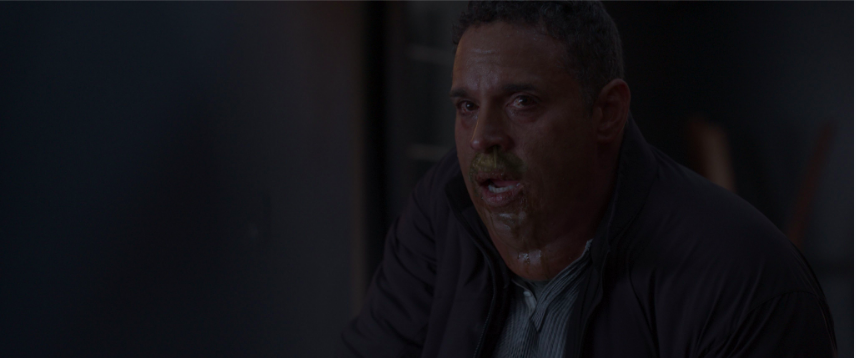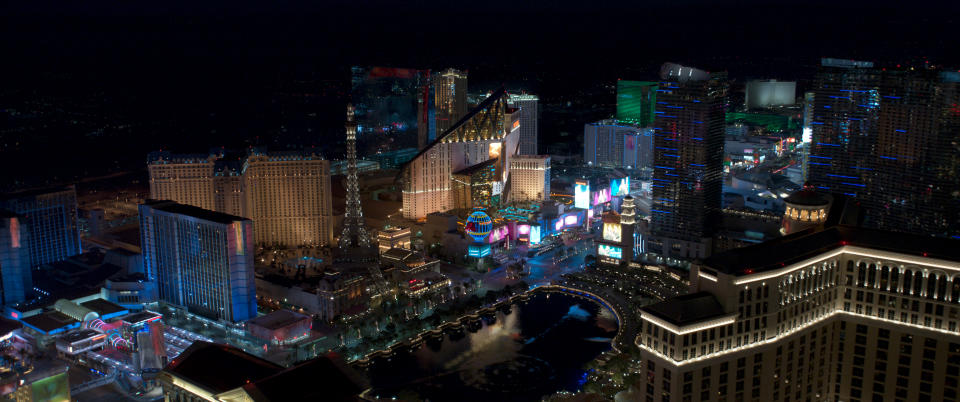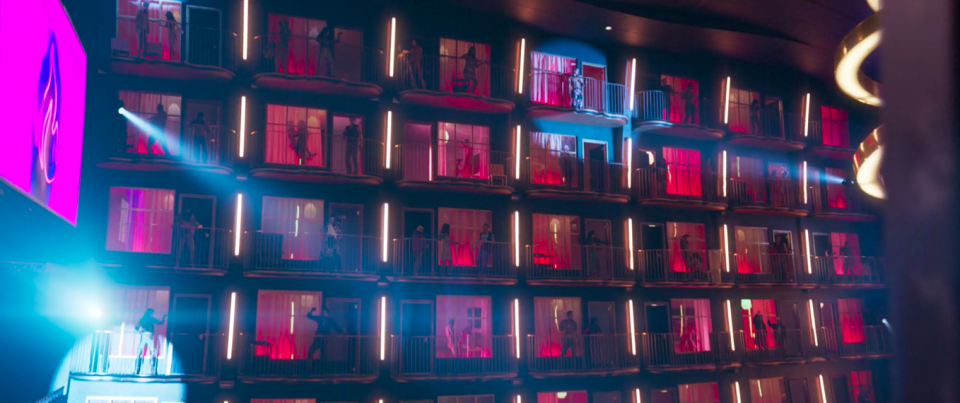‘The Stand’s’ VFX Supervisor Talks Creating Tube Necks and New Vegas

More than half a decade ago when Stephen King’s 1979 post-apocalyptic tome “The Stand” was being considered for a big-screen adaptation, visual effects supervisor Jake Braver joined the team to figure out how they would bring to life not only the physical manifestation of the virus that killed 99.4% of the population within the story, but also the dueling communities of Boulder, Colo. and New Vegas.
That feature film never came to be, but the project was pivoted to a nine-part limited series for CBS All Access, with Braver still aboard as visual effects supervisor, as well as a second unit director and producer. Being a part of the process so early on meant he was an essential part of the collaboration on the look of the show, as well as how they would shoot some of the pivotal pieces.
More from Variety
'The Stand' Boss on Harold as a Sociopath and Randall Flagg Being Like the Shark From 'Jaws'
What to Watch on TV This Week: 'The Stand' Premiere and 'The Mandalorian' Season 2 Finale
“We were doing concept art and [showrunner Benjamin Cavell] was calling me from the writers’ room saying, ‘We want to do this thing, here’s what we want to do, how do we do it and let’s talk about it,'” Braver tells Variety. “Being involved early in the process allows a two-way collaboration that both works on a story level, but also in [how] you can execute.”
Here, Braver breaks down some of the biggest and most VFX-heavy elements to the first five episodes of CBS All Access’ “The Stand.”
Tube necks

In order to fully understand what the virus known as Captain Trips did to the majority of the population in “The Stand,” the streaming series begins in the “before” times of the virus and also uses sporadic flashbacks to further drive home just how much was lost. Those who were infected with the virus exhibited flu-like symptoms at first, including coughing and sneezing, but soon enough had their necks swell up.
King described the look of these necks “so specifically in the book — that it looks like you have a tire around your neck — and there were these fantastic Bernie Wrightson illustrations that appeared in a version of the book,” Braver recalls, that they wanted to pay tribute to what long-time fans of the story were expecting to see. But, the team also wanted to lean into the technology available to them, making this show in 2019 and 2020, and do “what the ’90s miniseries couldn’t do.”
All actors had a “base layer of prosthetics” on while shooting “because it was important for them to move like they had a giant neck,” Braver says. “We didn’t want anyone to be able to move their necks very quickly or do something they wouldn’t be able to do if the necks were swollen.”
Actors who would only appear in the background of the scene had entirely “practical tube necks” built from these prosthetics, he continues, but for featured players, such as Cobb (Daniel Sunjata) or Larry’s mother Alice (Lisa Renee Pitts), there was a layer of CG added over anything they did practically.
“It was important for us to have them be fully CG because we wanted to be able to maintain the humanity of the people who were suffering and we wanted to be able to control how much they were shifting and jiggling and how much mucus was coming out of them. The way to have control is to shoot it to simulate these things later,” Braver says.
Additionally, while the necks were CG, Braver’s visual effects team created the mucus in another software program “that uses real-world physics to make the liquids move slow. We wanted something that was gross but not gross enough to take you out of the story,” he explains.
Randall Flagg’s wolves

When the Dark Man aka Randall Flagg (Alexander Skarsgård) appears to characters in their dreams, sometimes he shows them a form of himself and sometimes he sends a wolf instead. While “The Stand” used real, live hybrid wolves for those scenes, there was not one frame of footage featuring them that visual effects didn’t touch.
This was primarily because “for safety we knew it would be best to keep them separate” from the human actors, Braver says. “We really took the ‘Game of Thrones’ model, in that the wolves are visual effects, but they’re not CG: the wolves were wolves that we shot on green screen in a same environment and composited in.”
This was especially important for moments such as Mother Abagail (Whoopi Goldberg) facing off with a wolf who is just inches from her actual face.
“When you’re trying to get an angry reaction from an animal, you don’t know what’s going to happen,” Braver says. “It just became about figuring out a way to stage the scene in a way that made them feel connected, even though those two elements were shot separately.”
New Vegas

Braver was a part of the scout in Las Vegas to find what building would be the right one for Flagg to take over so it felt like he had “conquered” the city.
“The most important thing to Ben was to make New Vegas feel like a credible alternative to Boulder. We spoke a lot about that in writing and in prep and we wanted it to relate back to the Vegas that you’ve seen; it had to be like, ‘Oh I know that place’ but somehow it’s different. How is it different? ‘I can’t quite put my finger on it.’ It was all about the details for us,” Braver says.
During the scout, the team “climbed up on the roof of just about every casino” to pick what would feel right, but Braver says in the end “we were so amazingly lucky and we got our first choice.” That was to work with Caesars Entertainment and the Planet Hollywood structure in Las Vegas as the central hub of Flagg’s New Vegas.
“We very quickly settled on this parasitic architecture, taking the core of what you know to be the Planet Hollywood and ripping it apart, slashing through it, putting glass in it, making it feel menacing,” he says.
Caesars was also extremely helpful in helping the team accomplish the shots of the empty Strip so hundreds of people or cars didn’t have to be painted out in post, he says. The casinos under Caesars’ group closed select driveways for a few hours in the middle of the night, with those cars rerouted to still access the inside, in order to give production a chance to shoot practical empty shots. The show also employed the aid of “50 police cars [and] helicopters,” Braver shares.
“It’s eerie when it’s empty; it feels like a place that you’re used to seeing bustling. The minute you take out all of the people and cars, you’ve already done a lot to make it creepy,” he says. “But knowing what the end result we wanted with everything feeling stripped, it ended up being a lot of visual effects too.”
The Inferno


The interior of the hotel Flagg took over was a completely different beast for Braver, starting with the fact that it wasn’t shot in Vegas at all, but rather in the Pacific Inn, which is in Surrey, British Columbia. Although he says that immediately upon entry it felt like “an incredible canvas,” Braver had to make sure it matched the scale and scope of the Vegas footage.
The first two floors of the hotel as seen in “The Stand” were all shot practically in the Pacific Inn, but every floor above it was “entirely CG,” Braver admits. “[Production designer] Aaron Haye and I worked really hard together to come up with this environment that felt familiar but like you hadn’t quite seen this level of debauchery and madness.”
This included “every trick in the book,” Braver says, in order to showcase various actions on the higher floors. Some people were duplications, some were digital creations, and some were shot individually, on green screen, and then dropped in to the frame through the VFX/post-production process.
“When we wrapped shooting in March I was actually set to go to San Francisco and shoot a mocap shoot where we were going to shoot a couple of performers doing some of the very crazy, explicit things that you see some of these people doing, but we were locked down and delayed in doing that and we ended up doing it from home,” Braver shares. “We had one performer on a motion capture stage in San Francisco, I directed from home via Zoom, and all the ancillary support people were also at home. It was just this one incredible actor on stage acting as a woman serving drinks or a drunk woman stumbling around or a guy dancing or doing all of these sex acts. It was the most bizarre day of motion capture shooting ever.”
“The Stand” streams new episodes Thursdays on CBS All Access. Watch a composite of how Braver and his team turned Las Vegas and the Pacific Inn into Flagg’s New Vegas above.
Best of Variety
Sign up for Variety’s Newsletter. For the latest news, follow us on Facebook, Twitter, and Instagram.

